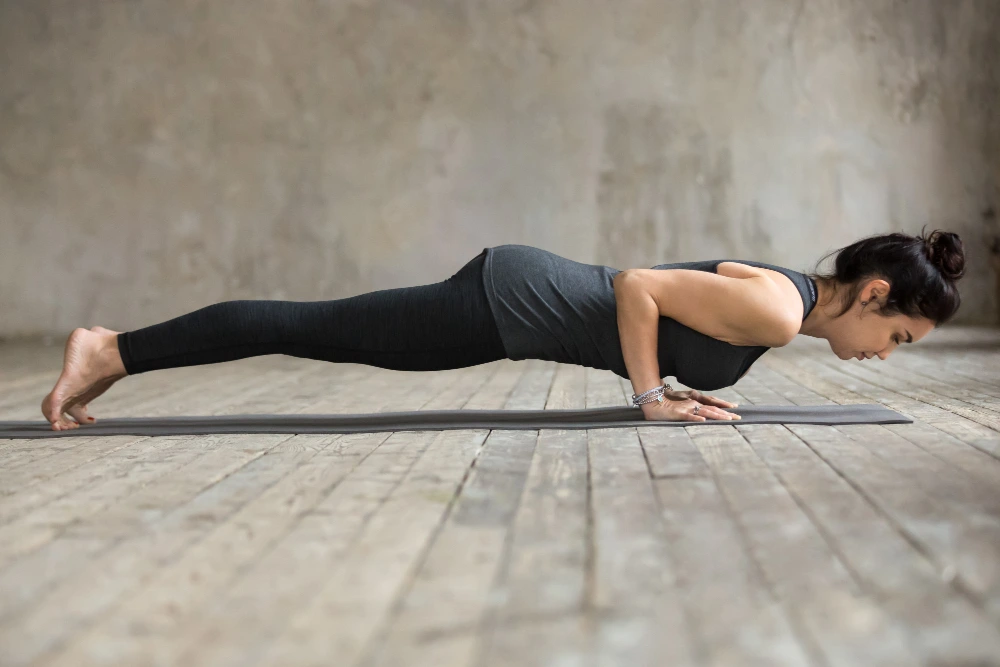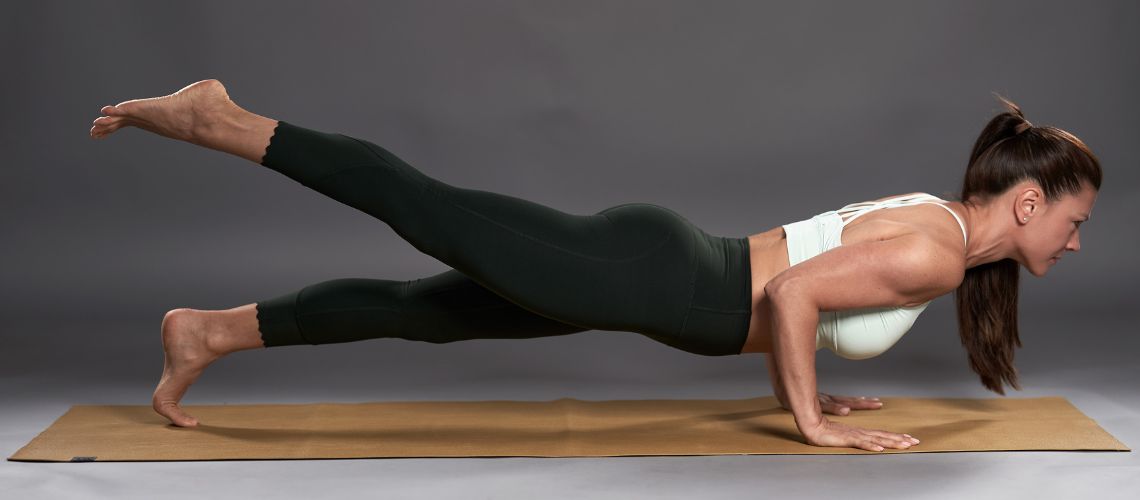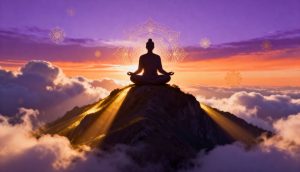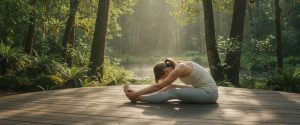Chaturanga Dandasana is one of the most challenging poses in yoga, as it requires a combination of strength, stability and precise alignment. It is present in many dynamic sequences, such as the Sun Salutation, and acts as a bridge between plank poses and backbends.
Although at first glance it may seem similar to a push-up, its correct execution involves a deep activation of the arms, shoulders, core and legs, which makes it an integral pose for developing endurance and body control.
Beyond the physical aspect, Chaturanga Dandasana also represents a mental and emotional challenge. Maintaining the body in suspension and aligned demands concentration and determination, fostering discipline and patience in practice.
By holding it with awareness and controlled breathing, not only muscular strength is developed, but also a deeper connection with inner stability and mental balance. It is a posture that teaches to find calm within the effort, allowing the mind and body to work together in perfect harmony.

Meaning of Chaturanga Dandasana
The name Chaturanga Dandasana comes from Sanskrit, where Chatur means four, Anga translates to limb, Danda means staff, and Asana means posture. Together, these words describe the body’s shape in this asana: a firm and horizontal alignment, supported only by four points of support: hands and feet, similar to a staff that floats in balance.
This pose is also known as Chaturanga or staff pose in four supports. In some yoga styles, it is considered the yogic version of the push-up, although its correct execution implies greater core control, activation of the deep muscles, and precise alignment.

Within Vinyasa Yoga and Ashtanga, Chaturanga Dandasana is one of the most repeated postures, as it is part of the Sun Salutation and many dynamic transitions.
More than a simple strength posture, Chaturanga is a test of endurance and control, teaching the practitioner to find stability in movement and balance in effort.
Chaturanga Dandasana Variations
Chaturanga Dandasana is a pose that requires strength, stability and precise alignment, so there are different variants that allow it to be adapted according to the level of each practitioner. From modifications for beginners to advanced adjustments, these adaptations help to perfect the technique and avoid injuries.
- Chaturanga with Knees Supported: Ideal for those who are developing the necessary strength in arms and core. By supporting the knees on the floor, the load on the arms and shoulders is reduced, allowing focus on the alignment and the control of the movement without compromising the posture.
- Chaturanga with Blocks: To improve stability and alignment, blocks can be placed under the shoulders. This helps prevent the chest from descending too far and maintain a firm posture, strengthening the body without the risk of collapsing the lower back or shoulders.
- Chaturanga with Wall Support: This variant is practiced by leaning the body towards a wall and holding the posture in a more vertical position. It is useful for working the muscle activation without supporting the full weight of the body, ideal for beginners or to correct the technique.
- Dynamic or Moving Chaturanga: In this more advanced variation, Chaturanga is combined with a fluid movement between the plank pose and Urdhva Mukha Svanasana (Upward-facing Dog). It’s an excellent way to improve endurance and coordination in transitions.
- Chaturanga with One Foot Supported: For those seeking a greater challenge, lifting one leg while holding the posture increases core activation and stability. This variant requires impeccable alignment and deep control of the muscles.

Each of these variations allows you to adjust the intensity and difficulty of Chaturanga Dandasana, ensuring a safe and effective practice. With time and practice, the body develops the strength and stability needed to hold the pose with fluidity and control.
If you want, you can take a look at our collection of yoga poses.
Benefits of Chaturanga Dandasana
More than a posture of strength, Chaturanga Dandasana represents a balance between control, endurance, and stability. Its practice strengthens the muscles of the core, arms, and shoulders, promoting a more aligned posture and a more stable body. By activating the deep muscles, it not only tones but also prevents injuries and improves overall endurance.
At a mental and emotional level, this asana challenges us to maintain focus and determination. Holding it demands presence and control, teaching us to manage the effort without losing stability. The concentration it requires strengthens the connection between body and mind, fostering resilience and self-confidence in our practice.
Incorporating Chaturanga Dandasana into the yoga routine not only develops physical resistance, but also helps us cultivate a focused and balanced mind. Each time we face this challenge, we remember the inner strength and determination that lies within us, encouraging us to overcome limits with awareness and control.






